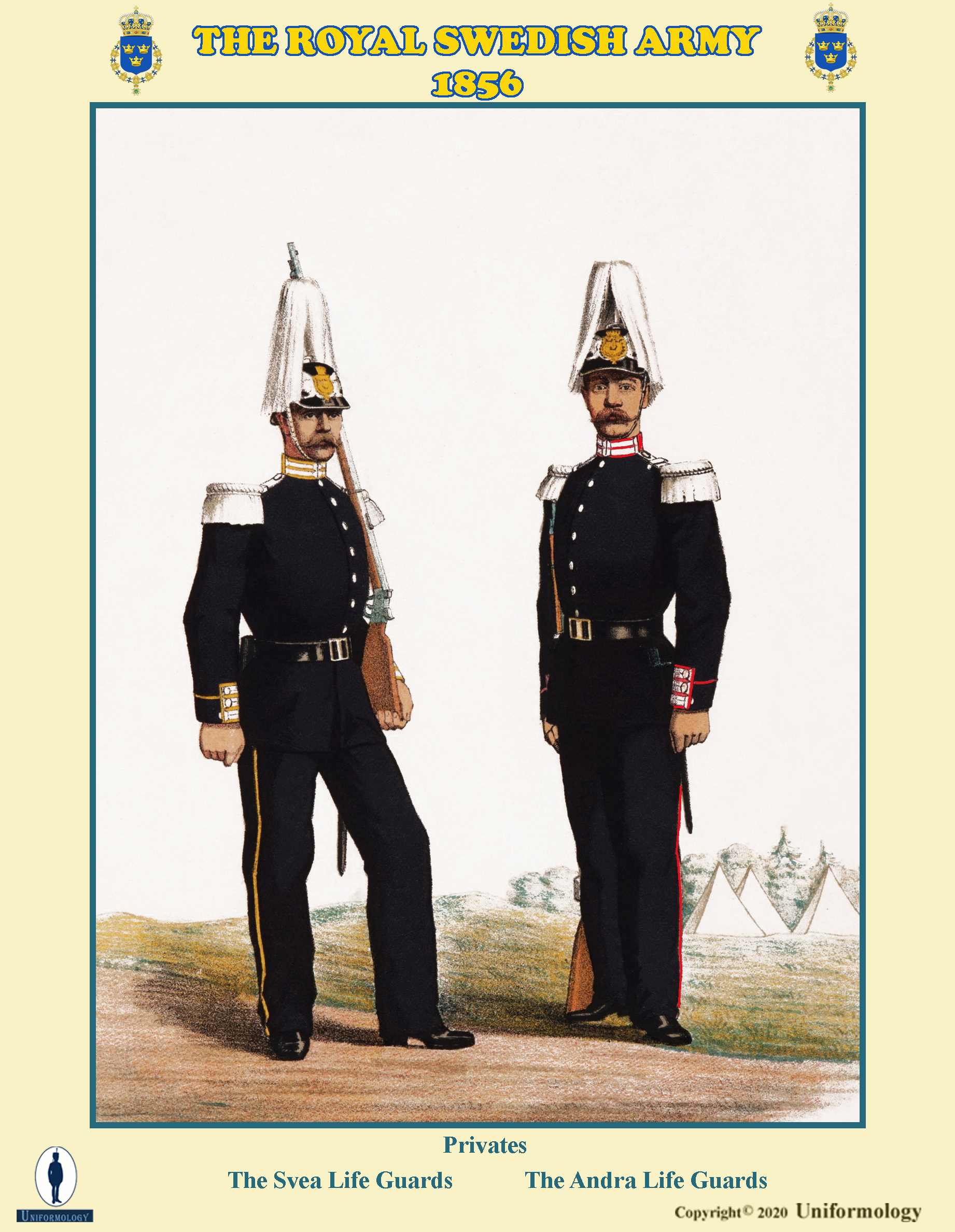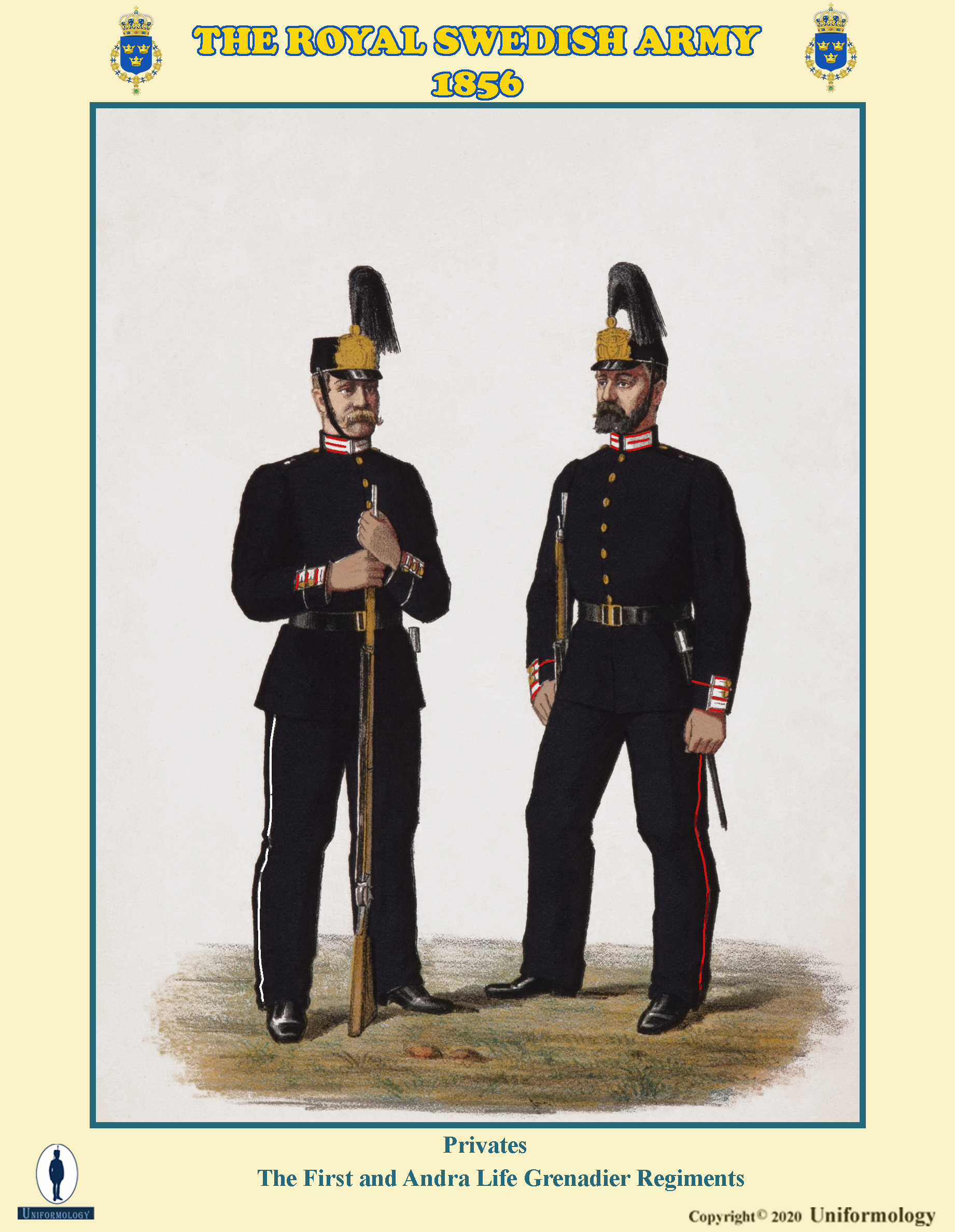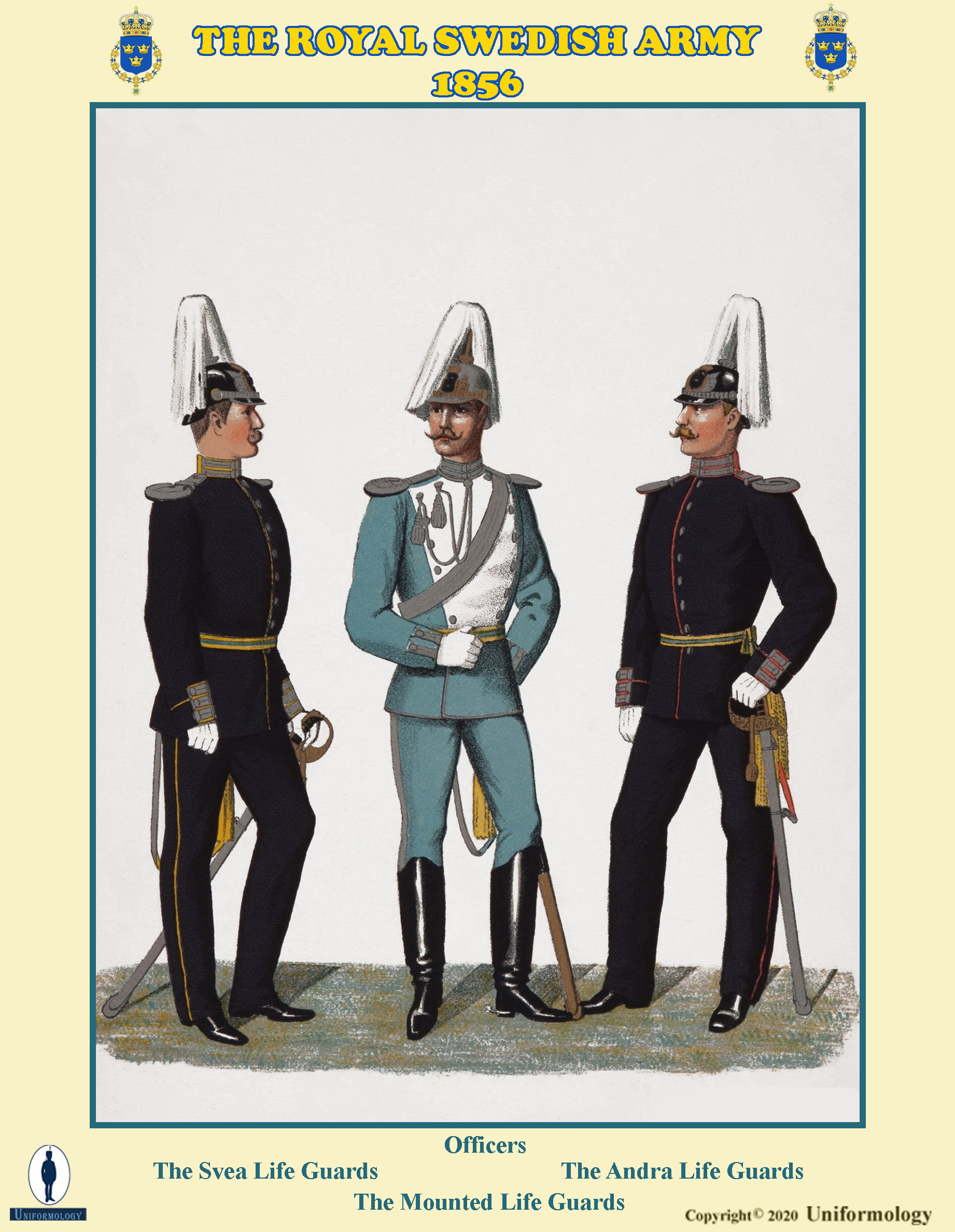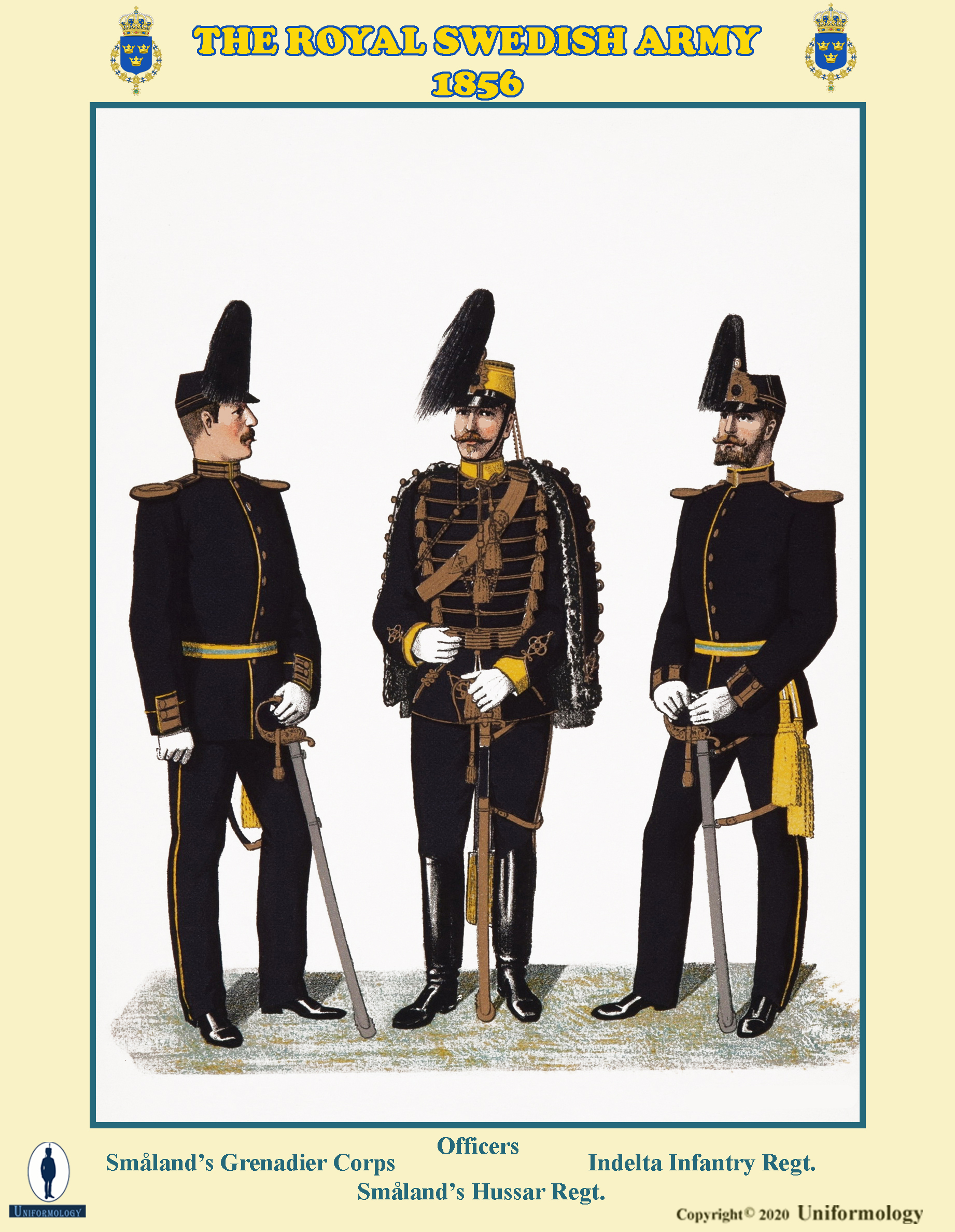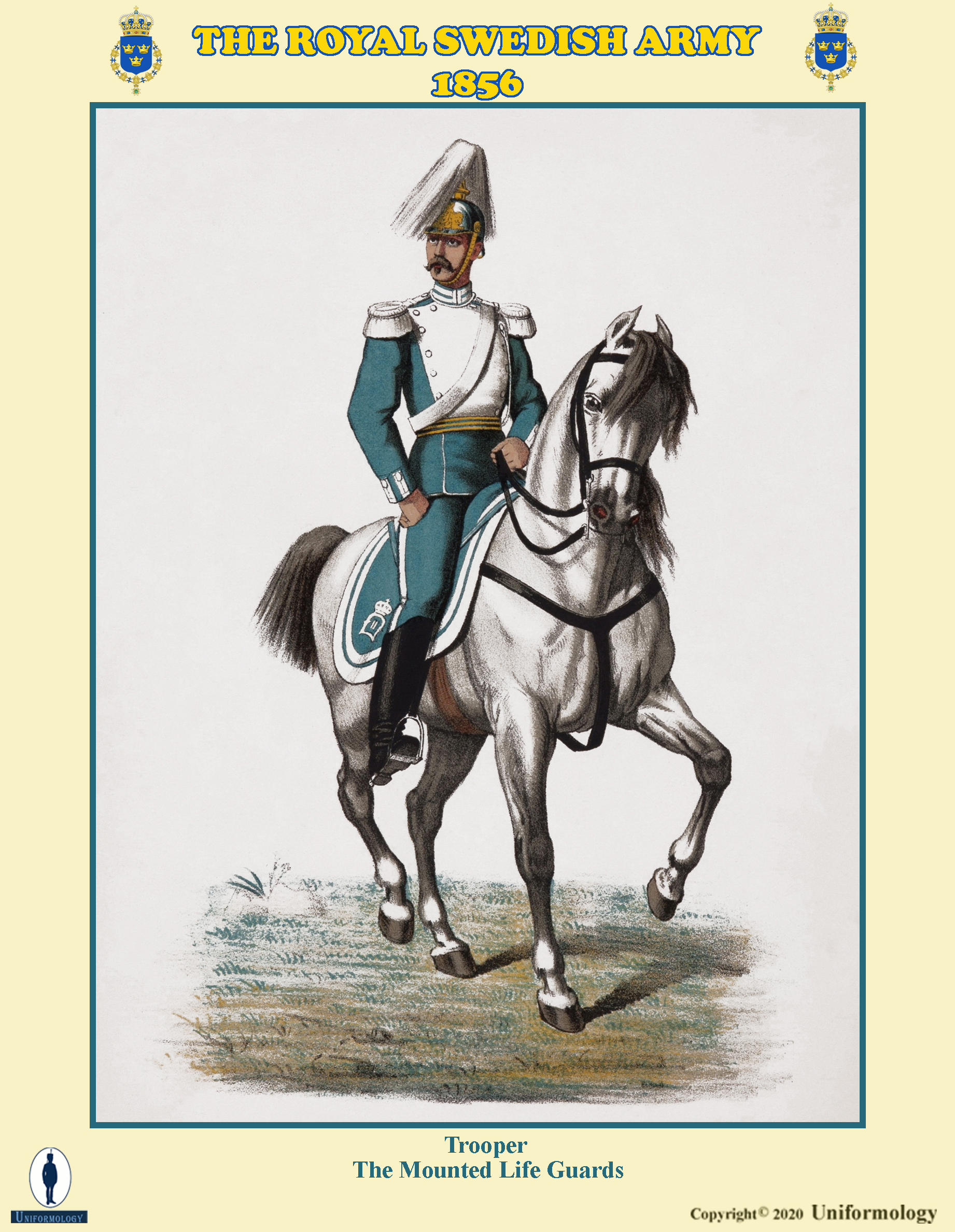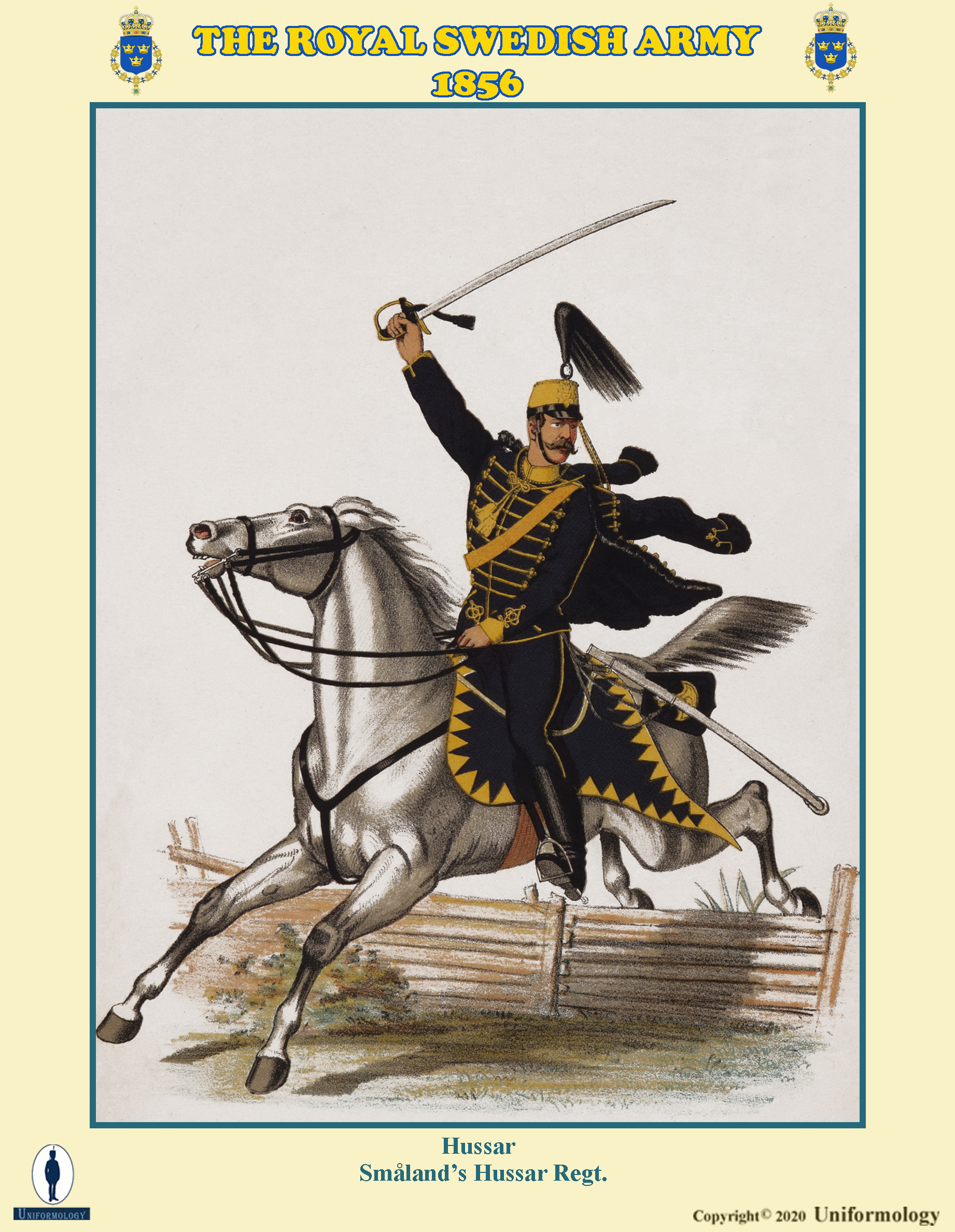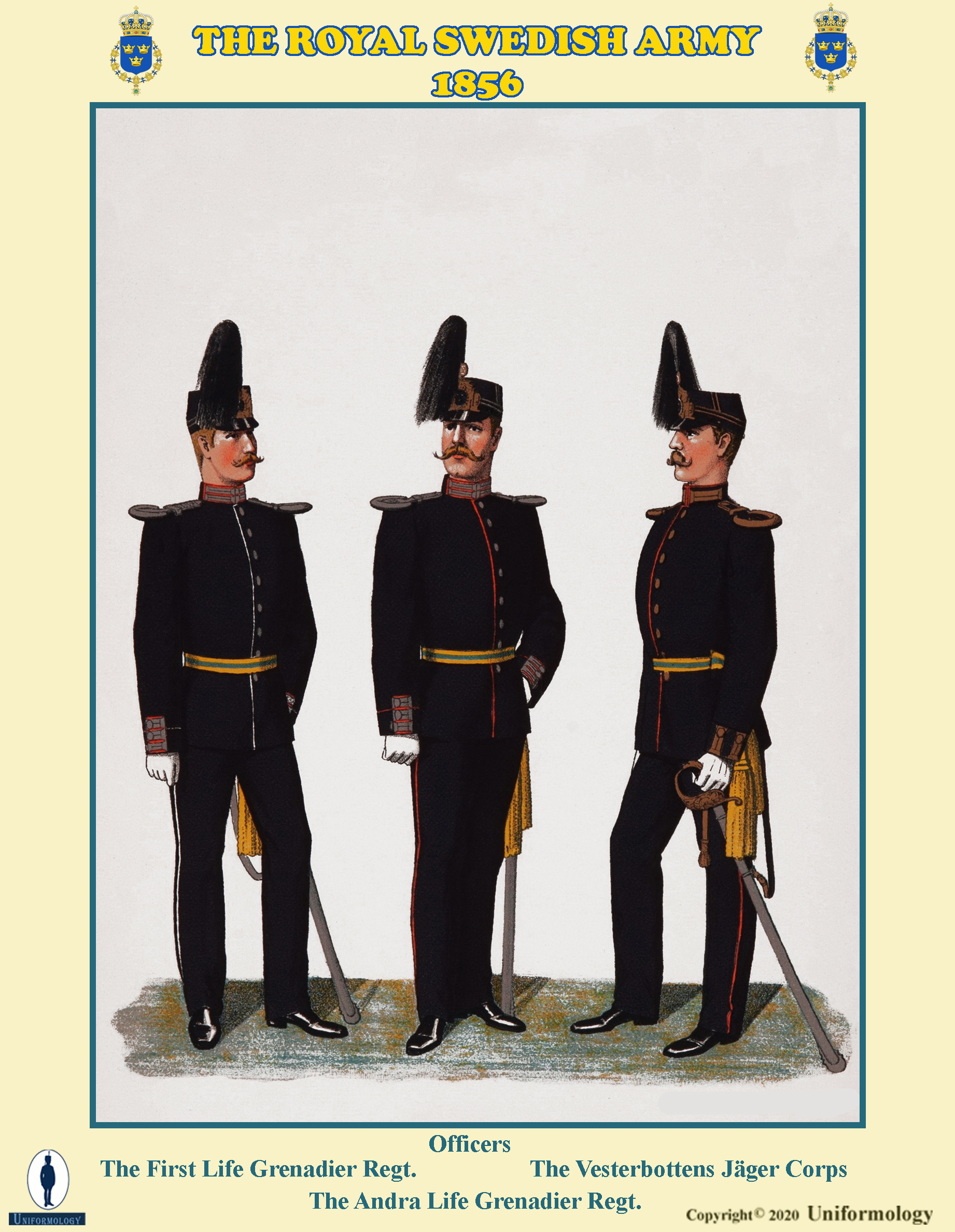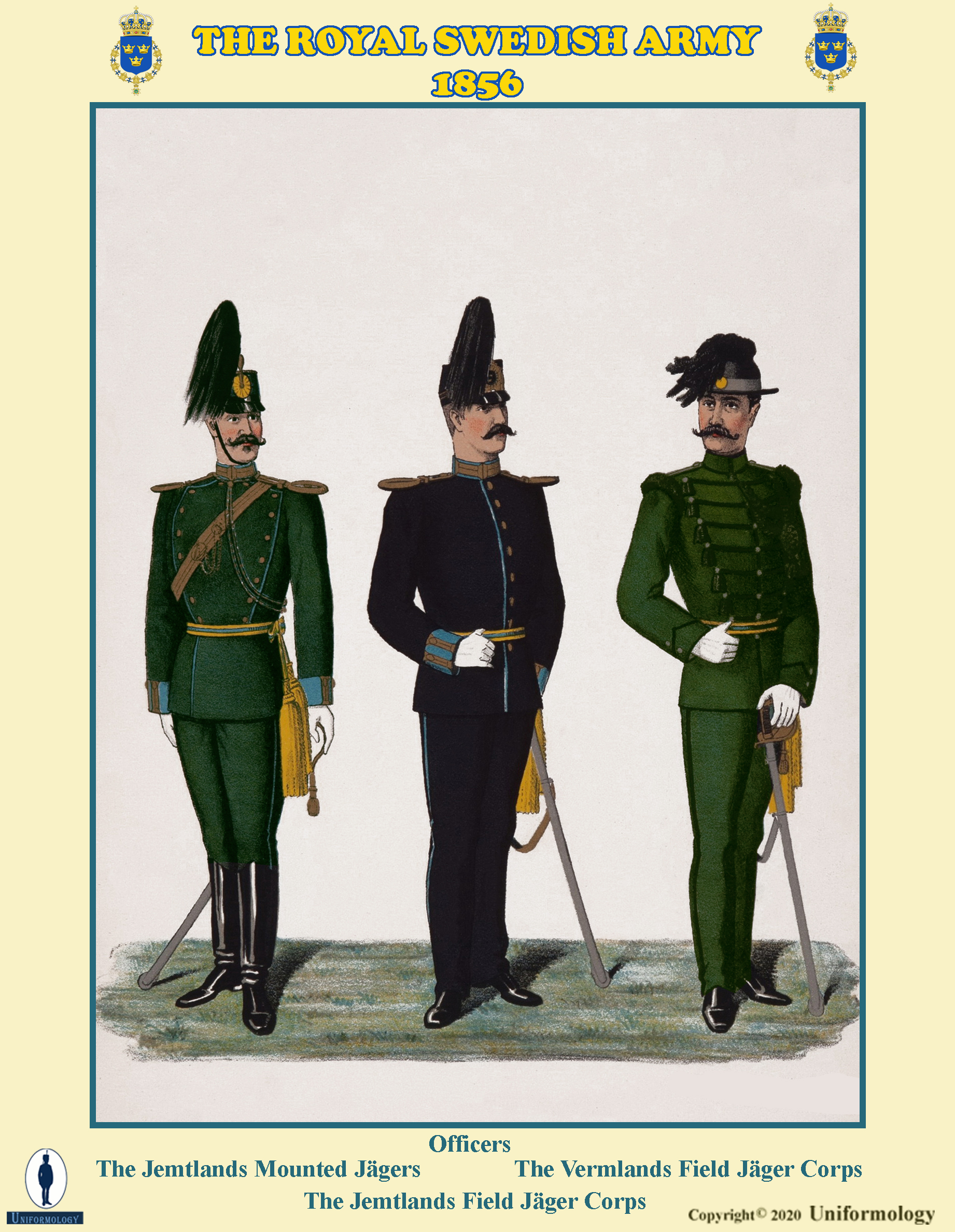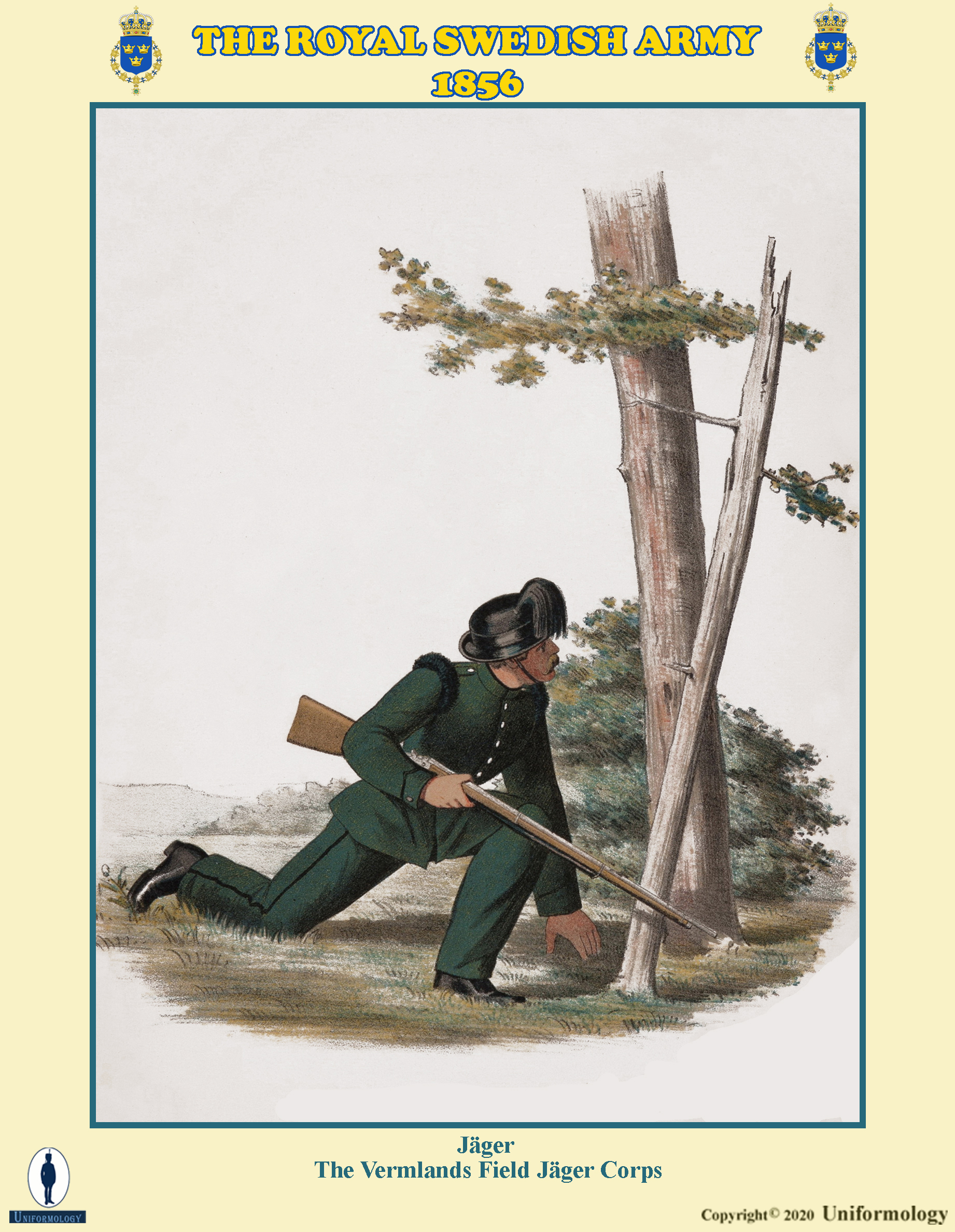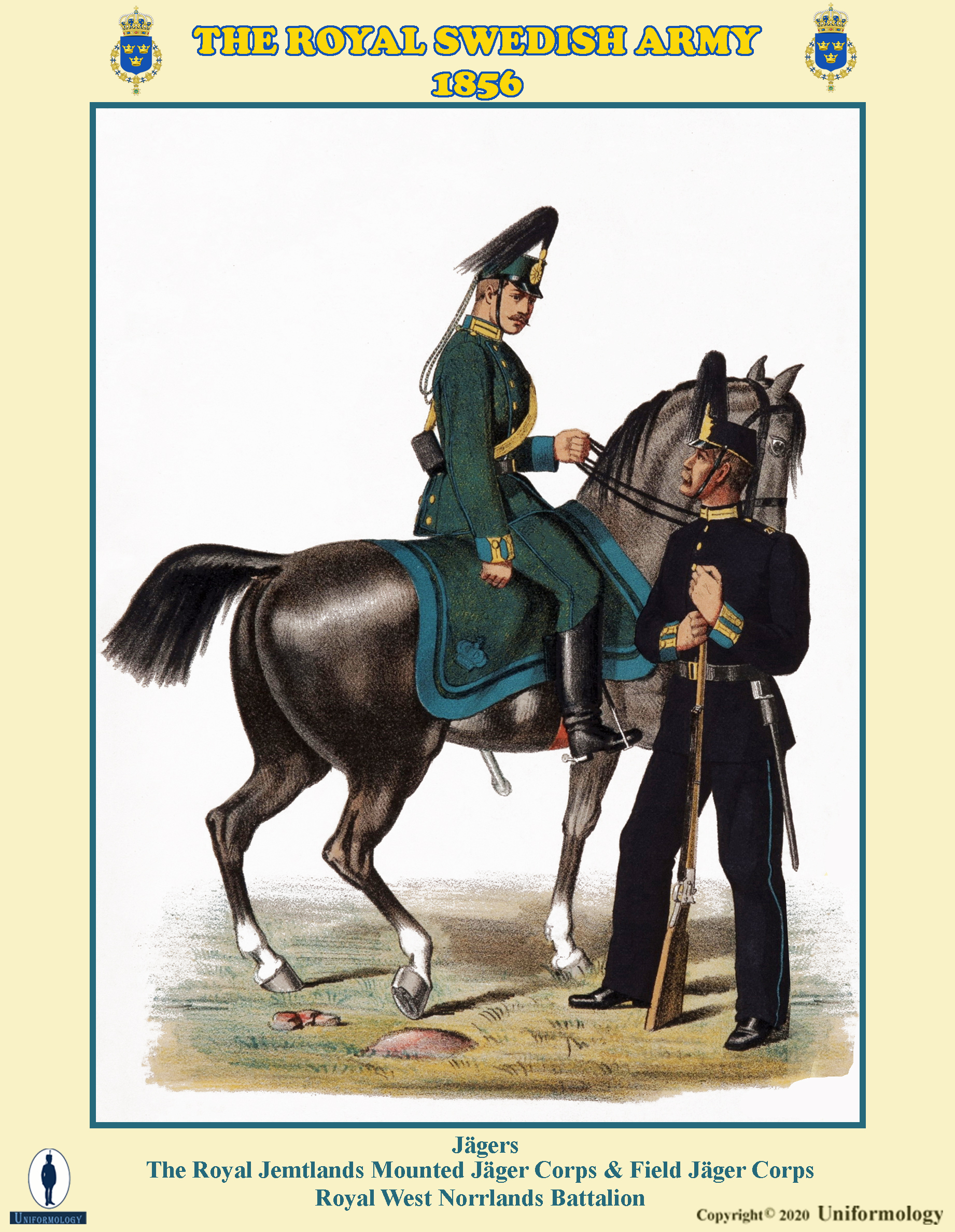THE WORLD OF MILITARY UNIFORMS
1660-1914
THE ROYAL SWEDISH ARMY and NAVY 1856
Lithographs of the Central Tryckeriet (Printing Company) Stockholm
Page 1
By the middle of the nineteenth century, the Napoleonic Wars, in which the Swedish Army fought valiantly, seemed a distant past. In 1818, Jean Bernadotte, a French Marshall who had fought with distinction at Austerlitz, ascended to the Swedish throne as Charles XIV John. He had been selected as Prince and heir to the throne in 1813 as a suitable candidate approved by Napoleon Bonaparte. Upon his death in 1844, his son Oscar became King.
The Swedish Army adopted tunics and spiked helmets on the Prussian model in 1845. In 1854 Kepis in the Danish style were ordered but not issued until 1856. The Life Guard retained the helmets with plumes until 1860. The Vermlands and some other Jager Corps adopted Italian Bersaglieri type headdresses. The heavy cavalry was dressed in Lancer style tunics with crested dragoon helmets. The Hussars were conventionally dressed with the kepi as a headdress. The Artillery regiments wore dark blue uniforms with kepis, but their distinctions depended on their regional titles. Like many armies of the time, other than the Royal Life Guard units, the regiments and corps were titled according to their regional garrisons.
The Swedish Navy was dressed, unsurprisingly in the British tradition.
In 1860 the tunic of the line infantry became double breasted, reverting to single breasted in 1886. The Swedish Army remained dressed as such until the end of the century.
Since 1815, Sweden has not ever been engaged in conflict with a foreign power. A distinction not many countries can emulate.
NEXT:
LINE CAVALRY, ARTILLERY, NAVY
& OTHER CORPS

